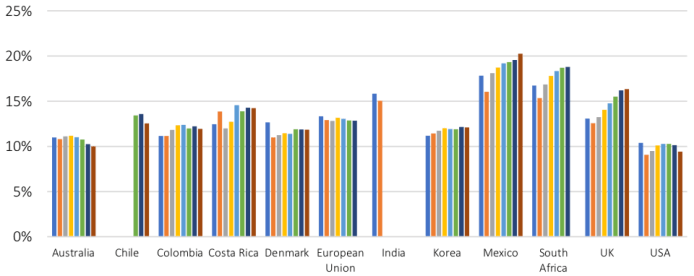I’ll first start by saying why I’m writing this series. In such a complex world that we have there are a great number of problems or, better put, challenges. Each of us, each city, each country with its own. Then, there are problem solvers. Most of us strive to provide solutions to some of these problems, as a doctor would when attending someone sick or as an engineer building the next bridge. Attention for these problems is generally widespread. However, there’s a set of universal challenges, ones that go beyond borders or are present in many instances. These, I’d say, are of great importance. They tend to have some form of relationship to our basic necessities: food, energy, transport, health, shelter, wellbeing. Therefore, it is important that as society we dedicate sufficient resources, talent and time in solving these. One of these is mobility.
Mobility is defined as the ability to move or be moved freely and easily. Urban mobility then, should mean we are able to move easily within the urban environment, cities. However, is this the case? Do we really have urban mobility? By 2050, it is expected that 2/3 of the global population will be living in cities and this is an irreversible trend. Cities are growing at a very fast pace, faster than its underlying infrastructure, and part of this infrastructure is our transport infrastructure.
Therefore, we are presented with an urban transport challenge. This challenge will consist of moving 7 billion people within cities to their family, friends, home and job in a practical, affordable and sustainable way. Are we doing it now? It doesn’t seem like so and we have to make a significant correction. The main challenges of urban transport in cities are emissions, traffic and costs. Some have certain elements more acute than others but those are the underlying trends. These relate to some of the necessities I mentioned above, mainly energy, transport, health and wellbeing. How are we benchmarking in terms of these problems? Below I explore these in more detail, with a particular focus for a region that is my home, Latin America.
- Emissions – Most of us are well aware that transport is one of the main emissions contributors, affecting the air quality of our cities and adding on to climate change. There are more than 1bn vehicles in the world which account for 21% of CO2 emissions. The UN has recently warned that if we don’t dramatically change our current rate of emissions by 2030 (11 years!) we’ll have caused irreversible damage and the effects of climate change will be catastrophic. If climate change and the last sentence doesn’t cut it, let’s make it more perceivable and think of the air you and I breathe everyday in our cities. Monitoring data shows that in Latin America, 93% of the urban population breathes air above the WHO guidelines, level beyond which our health is unsafe. Analyzing data for Mexico’s largest cities, we can observe we’re breathing not just above the guideline but up to twice above that established by the WHO and Mexico’s official standard, every day.

Average measurements of PM 2.5 & 10 in Mexican cities, compared to World Health Organization (WHO) Guidelines and Mexican Official Standard (NOM). Data from the WHO Ambient Air Pollution Database 2016.
- Traffic – We spend approximately 150 hours in grid-locked traffic a year in the main Latin American capitals. In some places like Mexico City and Bogota more than 200. We’re losing all this time without even factoring in the rest of the time when we’re actually moving in our commutes. Think of what you could do with an additional week of holiday, this adds up to approximately the same. Time also translates to money. In the US, for example, 97 hours are lost on average and adding up to 87bn USD in economic losses. The worst part is that many trips are done with a single occupant in the vehicle, more than 50% thinking of Mexico.

INRIX Scorecard 2018
- Cost – This is affects all of our necessities through our personal economy. How much is it costing us to commute to work, home and all aspects of our lifestyle? It’s a cost we need to cover to participate in the job economy, but does it leave enough room to put a roof over our heads and food on the table? How much? Some countries like Luxembourg provide free public transport, but costs are still recovered through some form of tax. In Latin America, transport spending as a share of household spending ranges between 10-20%. Unfortunately, in most cases, the trend is that it is going up. In Mexico for example, it constitutes almost twice (20%) than in the US (10%).

Transport Spending as a Share of Household Spending, Evolution from 2008 to 2015. Gandelman et al., 2018. Household Spending on Transport in: Latin America and the Caribbean
These indicators show that we’re already at a difficult spot. How then, will we solve this challenge moving forward? How will we ensure the cities of today and tomorrow are livable? The following of this series of three will be dedicated to what I believe to be an option for a solution, defining it and justifying how it can work.

